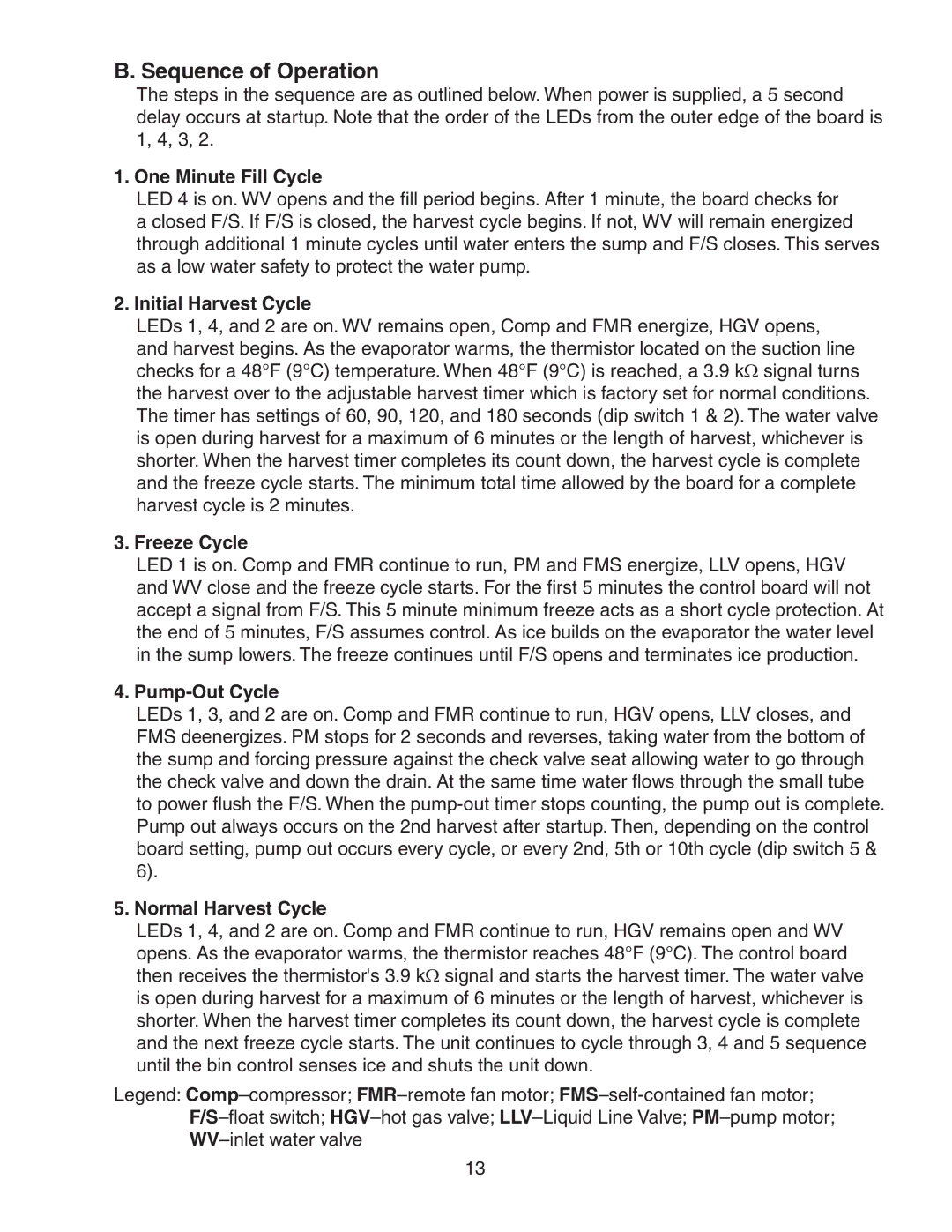KM-501MAH, KM-501MWH, KM-501MRH specifications
The Hoshizaki KM-501MWH, KM-501MAH, and KM-501MRH are standout models in the commercial ice machine market, known for their robust performance and innovative technologies. These machines are specially designed to meet the diverse needs of restaurants, bars, and other food service establishments that require a reliable source of high-quality ice.One of the defining features of the KM-501 series is their high production capacity. Each model can produce up to 500 pounds of ice per day, ensuring that even the busiest establishments can keep up with demand. The ice produced is crystal-clear, with a unique crescent shape that not only looks appealing but also melts slowly, making it ideal for drinks and food presentations.
The KM-501MWH model is equipped with advanced technology that ensures energy efficiency and reduced water usage. It features a powerful compressor and a highly efficient evaporator, which work together to minimize energy consumption while maximizing output. This makes it an environmentally friendly choice, reducing operational costs for businesses.
The KM-501MAH model stands out with its air-cooled condenser system, which allows for optimal performance without the need for extensive cooling water lines. This makes the installation process easier and reduces complexity, enabling businesses to set up their ice machine with minimal hassle. Furthermore, it features a self-cleaning mode that simplifies maintenance, contributing to consistent ice quality over time.
On the other hand, the KM-501MRH is designed for rugged environments. It is constructed with high-quality materials that enhance durability and longevity, making it suitable for outdoor applications or establishments located in warmer climates. The stainless-steel design not only contributes to the machine's robustness but also ensures easy cleaning and resistance to rust and corrosion.
Another key characteristic of the Hoshizaki KM-501 models is their user-friendly control panel. These machines come with intuitive controls that allow operators to easily adjust settings and monitor performance. This feature is particularly useful for staff in busy kitchens, enabling them to focus on service without constant checks on ice production.
Overall, the Hoshizaki KM-501MWH, KM-501MAH, and KM-501MRH offer excellent performance, energy efficiency, and user-friendliness. Their combination of innovative technologies, durable design, and high output capacity make them exceptional choices for any establishment in need of reliable ice production. Whether for a bustling restaurant or a bar serving up cocktails, these machines deliver ice that consistently meets high standards.
